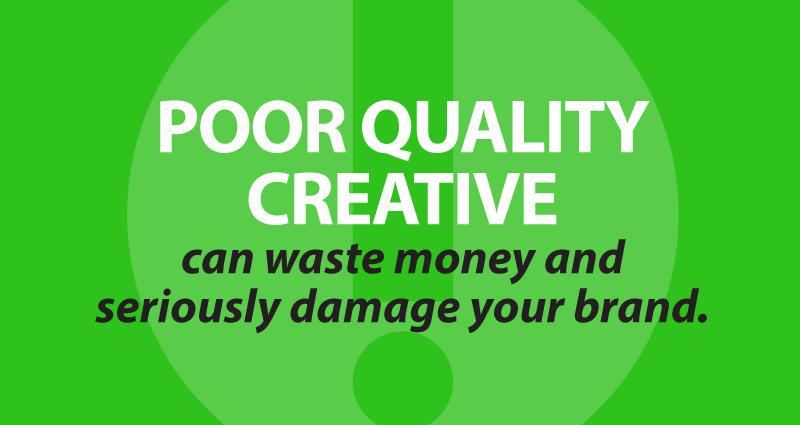
Are you investing in high quality marketing or just throwing money away?
Are you investing in high quality marketing or just throwing money away? With creative work (concepts, copy, and design) it’s sometimes hard to tell the difference until you count the results. But creative quality is vitally important – excellent creative multiplies results, while poor quality creative can waste money and seriously damage your brand.
So how do you tell the difference between good creative and bad? If you’re a “creative” person, how do you explain the difference to a “numbers” person? If you’re a “numbers” person, how do you evaluate creative concepts and work?
These five simple questions are a great start toward writing and designing high-quality creative. But they’re also a great way to evaluate creative work in progress.
Who’s the target?
Who, specifically, are you creating for? If you’re selling car loans, “members 25-35” isn’t narrow enough — you’ll just end up with generic copy written to appeal to yourself. “College-educated women buying their first new car” is a little better.
But the best would be something like this: “Maria is a single mother with an aging Chevy that just needed a $500 repair. She just got a promotion, so she’s thinking seriously for the first time about buying a brand-new car with a warranty…” The closer you can get to defining a specific person and situation, the more powerful and effective you can make the message.
This might seem paradoxical to non-creatives — “we don’t want to leave anyone out”. But as every kid at camp knows, it’s a lot easier and more effective to write a letter to Aunt Martha than it would be to write a generic letter addressed to “Female Relative”.
Does it have a distinct voice?
By “voice”, I don’t mean the sounds coming from the guy who reads your commercial on the radio. I mean the literary definition — a unique, human perspective. The secret to remember is that human beings are built so that they mostly understand messages from other human beings. Messages from machines and organizations have a very hard time getting attention and being understood.
Was your copy filtered through a committee and then rinsed of all humanity by compliance? Or is it personal, readable, and interesting, like a message from a friend or favorite author?
Is it unique?
The definition of “unique” doesn’t just mean “different” — it literally means “one of a kind” — the only one in the whole world. The “plumber test” is one way to tell — for example, “Great rates and friendly service” would work just as well for Bob’s Plumbing as it would for your credit union.
In addition, credit unions need to go another level deeper — even if you’re the only credit union in town, that doesn’t make you unique — you can’t rely on just being a credit union. What makes your particular credit union different from every other credit union on the planet?
It it emotional?
Emotion drives human behavior — even the most logic-driven human beings make decisions based on satisfying their emotional needs. Creative work must create an emotional connection. Every element must have an emotional reason for being there. Colors, typefaces, sounds, and web interfaces all contribute to a certain emotional environment.
Is it authentic?
People are skeptical – they’re used to being lied to. Does your creative feel like a credible, authentic message from one human to another, or does it feel like a carnival barker’s pitch? Is it full of starbursts, cliches, and weasel words?
- CU Numbers Need Marketing Love, Too - April 2, 2024
- Will it blend? The only CU fintech question that matters. - February 13, 2024
- Solving the CU marketing “now what?” problem - January 16, 2024
